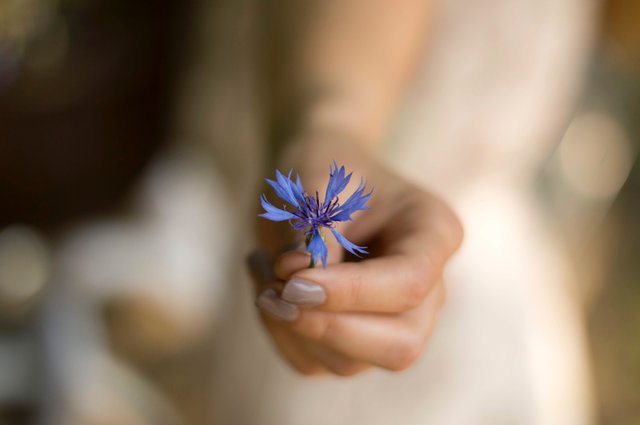Did you know?
The cornflower is also known as the Bluebottle, Bachelor's Buttons, Blue bonnets, Brooms and Brushes, Corn-blinks, Ladder love, Logger-heads, Miller's delight, Pin-cushion, Witch bells, Witch's thimble and Blavers.
Before so many exotics began to flood into English gardens, the Cornflower was much cultivated.
Cornflower is striking enough to have given its name to a colour.
The most valuable blue sapphires are called cornflower blue, having a medium-dark violet-blue tone.
Cornflowers were found in Tutankhamun’s tomb in Egypt. Despite having being over 3,000 years old they had lost very little of their colour.
The French wear cornflowers much like we wear poppies: as a symbol of remembrance. It is known as the Bleuet de France. They are the national flower of France, Germany, Estonia, Belarus and the Czech republic.
Cornflower used to be taken against poison, plague, wounds, fevers and inflammations. The dried flowers are still used to make medicine. The petals add flecks of brilliant blue to tea and people take the astringent, diuretic and anti-inflammatory herbal tea to treat water retention, fever, constipation, and chest congestion. Women consume it for menstrual disorders and vaginal yeast infections. People also take it as a tonic, bitter, and liver and gallbladder stimulant. Juice from the flowers, mixed with alum, can be used by water-colourists.
Hi! I am a robot. I just upvoted you! I found similar content that readers might be interested in:
http://www.plantlife.org.uk/uk/discover-wild-plants-nature/plant-fungi-species/cornflower
Downvoting a post can decrease pending rewards and make it less visible. Common reasons:
Submit
Downvoting a post can decrease pending rewards and make it less visible. Common reasons:
Submit
how can i help you
Downvoting a post can decrease pending rewards and make it less visible. Common reasons:
Submit